


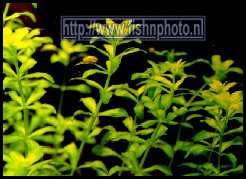
![]() Hemianthus micranthemoides
Hemianthus micranthemoides
![]() Hydrocotyle vulgaris
Hydrocotyle vulgaris
![]() Lobelia
cardinalis
Lobelia
cardinalis
Hydrocotyle verticillata ![]()
Micranthemum umbrosum
![]()
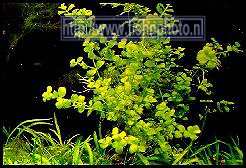
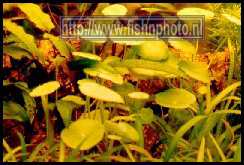
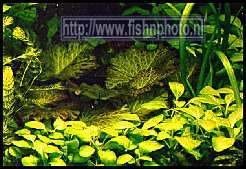
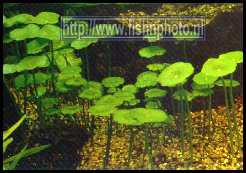
   | ||
|
Voorgrondplanten
in het Architectonisch Gezelschpsaquarium 4 | ||
 |
|
|
|
|
|
|
|
Hemianthus
micranthemoides: The little plant originates from the east of Northern
America. It also is to be found in the middle of America. In nature it grows like
tight carpet on a marsh soil. It needs much lightning for the rest it adapts effortlessly
to the circumstance. It does not endure really alkaline water. It strongly resembles
the following specimen. However the little leafs end clearly pointed. A high amount
of light is necessary. |
Also in the aquarium the leafs often grow to the surface. That in this way is a source of dissatisfaction. It often is hold for: Hydrocotile verticillata: (umbrella plant) that is found in the east of North America. Here the creeping stem shows forks so that the little umbrella's stand more together, which raises the decorative worth. It is an extraordinary decorative and extremely suitable for the foreground. On a thin little stem is a bright green and almost round leaf. At sufficient light the stems stay 4 - 5 cm high. Both these characteristics make it better adapted to foreground plant. Telling apart this specimen from the proceeding specimen is unfeasible for the layman. Lobelia cardinalis: Is found in the middle and in the east of North America. In our regions it can be found sometimes as cultivated plant. Than it has a standing up fleshy stem of more than a meter high. The long and narrow leafs have a serrated edge and a pointed top. A big cluster of cardinal red flowers that in a way remind of a little butterfly, springs from this stem. In the aquarium only the tops are utilized, that take root for sure in contrast with what German language literature mention sometimes. Placed close to each other they let easily form themselves till the so much admired streets. Whenever the plant, that shows in spite of a good lighting a sluggish growth, has to be shortened, it is taken out of the bottom, the undermost part of the stem is cut off, and the top is replaced. (We say in Dutch "toppen") Together with Saururus cernuus it is the plant that is used most often in streets and beds that remain low |